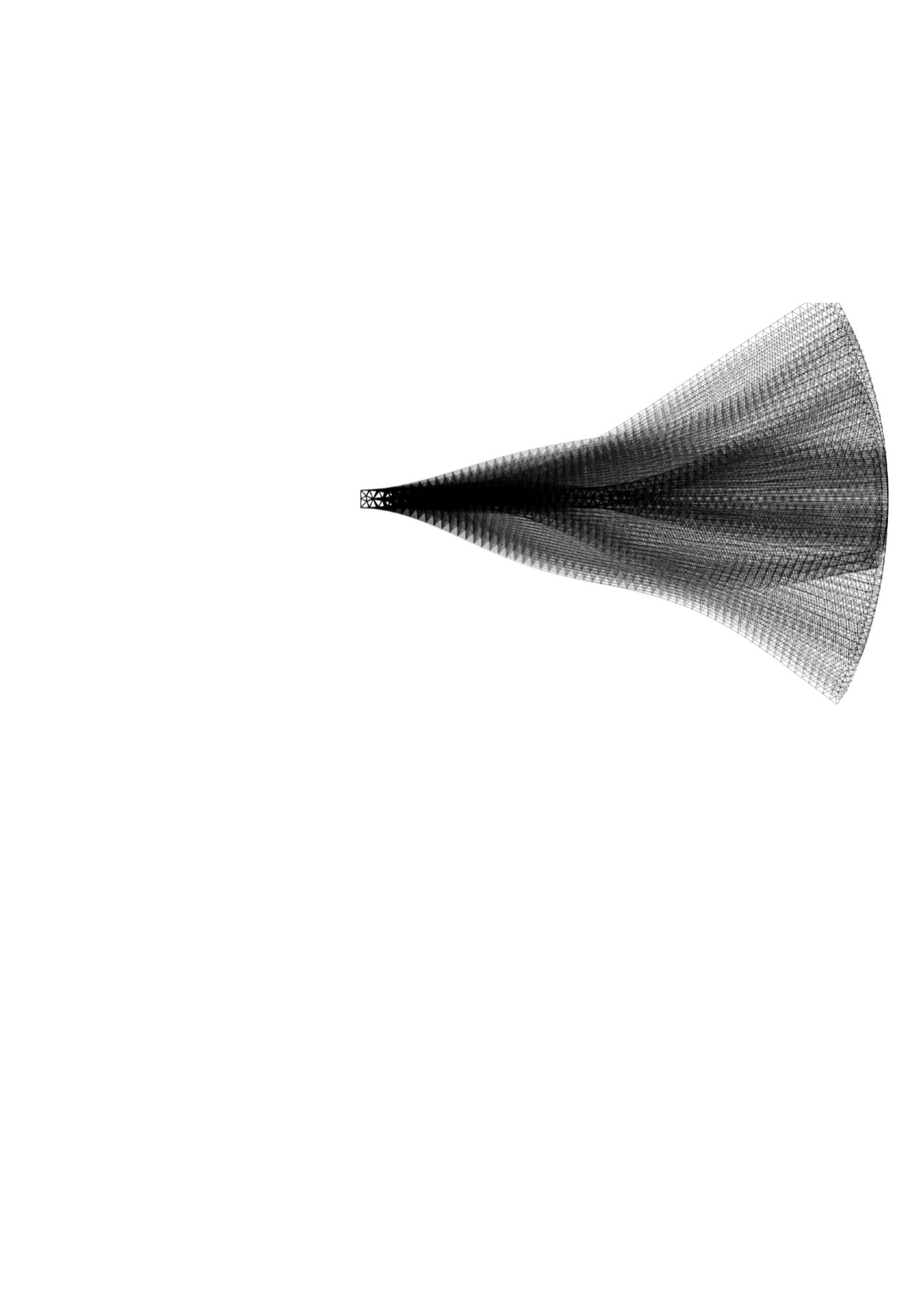

222
Applied Mechanics
Development, simulation and experimental investigation of complex dynamical and mechatronic systems
n
The Chair of Applied Mechanics is a leading research center in the field of dynamics of
mechanical and robotic systems. The core of its activities focuses on the development of novel
simulation and experimental techniques for efficient analysis of complex structural dynamics,
and on the design, construction and control of advanced robotic machines. The research is
organized in three main areas: Dynamic Simulation and Numerical Techniques, Experimental
Dynamics, and Robotics and Mechatronics. Each research group bundles specific expertise,
monitors international advances and actively discusses future research directions.
Designing and optimizing high-tech systems necessitates
accurate and efficient modeling. The expertise and
research focus of the chair is mainly on model reduction
aspects, parallel computing strategies and
numerical techniques to simulate struc-
tural dynamics.
The simulation of many advanced
mechanical structures that undergo large
deformations, such as microelectromechanical
systems or wind turbine blades, often requires long
computation times. One approach to reduce computation
time is model order reduction, which has been a central
research interest at the chair for many years. Recently,
so-called simulation-free hyper reduction methods that
can significantly reduce simulation time have been devel-
oped and implemented in the chair’s Python-based finite
element research code (AMfe). In current research, these
methods are extended to parametric systems to be used
for optimization and real-time control applications.
Most classical model order reduction methods take exclu-
sively mass and stiffness properties of dynamical systems
into account, but neglect damping effects. Thereby, only
real-valued undamped vibration modes are considered.
However, if damping significantly influences the dynamic
behavior of the system, the approximation quality might
be poor. Therefore, we modify classical modal order
reduction methods by using complex damped vibration
modes to obtain good approximations of damped
systems.
Another competence of the chair is the Finite Element
Tearing and Interconnecting (FETI) method, which is a
class of parallel, iterative solvers for structural dynamics.
The research focuses on linear and nonlinear dynamics
and the application to large flexible multibody systems.
Herein, the recycling of gathered information during the
solution process is crucial due to the fact that the same or
similar systems are solved repeatedly.
The chair is also participating in a European training net-
work called EXPERTISE, which is short for ‘Experiments
and High-performance Computing for Turbine Mechanical
Integrity and Structural Dynamics in Europe’. The main
Dynamic Simulation and Numerical Techniques
goal of the project is to develop advanced tools
for the dynamic analysis of large-scale models of
turbine components. Currently, the research focuses on
the application of FETI methods to increase the parallel
scalability of turbine models, and an experimental
approach for dynamic identification of blade-to-blade
interfaces.
Projects
■■
Varying manifolds and hyper-reduction for geometri-
cally non-linear structures (internal)
■■
Model order reduction of parametric nonlinear mechan-
ical systems for influencing vibrations (DFG)
■■
Substructuring for nonlinear components (internal)
■■
Domain decomposition techniques for dynamic
problems (internal)
■■
Domain decomposition methods for large flexible
multibody systems (internal)
■■
Elasto-hydrodynamic lubricated contacts in multibody
dynamical systems (internal)
■■
Aerodynamic noise prediction of treaded tires using a
hybrid aero-acoustic methodology (National Science
Foundation Luxemburg)
■■
Dynamics analysis of large-scale models of turbine
components (EXPERTISE)
Simulation-free training set
for hyperreduction of a cantilever beam



















